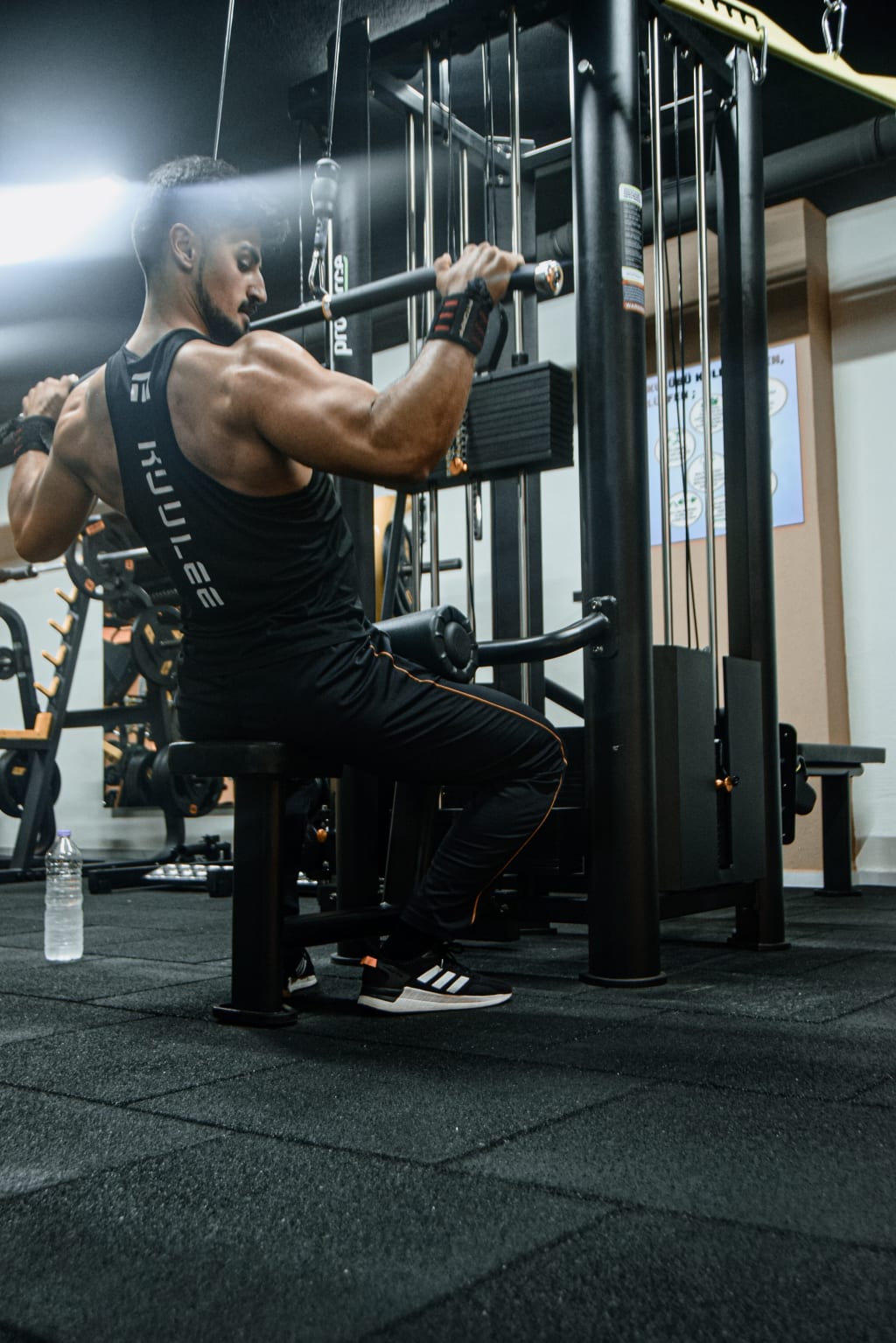HOW TO MASTER CABLE CHEST FLYS FOR MAXIMUM RESULTS.
Mastering The Machine Fly: Method & Advantages For More Power.

Mastering cable chest flys can be an effective way to target and develop your chest muscles. Here are some tips to help you maximize your results:
1. Understand the exercise: Cable chest flys primarily target the pectoralis major muscles, which are the main muscles of the chest. The exercise involves using cables attached to a pulley system to perform a horizontal fly motion. This movement mimics hugging or opening your arms wide.
2. Adjust the cable height: Set the cable pulleys at a height slightly below shoulder level. This position allows for a full range of motion and engages the chest muscles effectively.
3. Choose the appropriate weight: Start with a weight that allows you to perform the exercise with proper form and control. You should feel a challenging but manageable resistance throughout the movement. Gradually increase the weight as you become more comfortable and stronger.
4. Maintain proper form: Stand in a split stance with one foot slightly forward, keeping a slight bend in your knees. Hold the handles with your palms facing down and your arms extended out to the sides. Engage your core, keep your shoulders back and down, and maintain a slight bend in your elbows throughout the exercise.
5. Control the movement: Slowly bring your arms forward in a hugging motion, keeping a slight bend in your elbows. Focus on squeezing your chest muscles as you bring your hands together in front of your chest. Avoid using excessive momentum or swinging your body during the exercise.
6. Mind-muscle connection: Concentrate on feeling the tension in your chest muscles throughout the entire movement. Visualize your chest muscles contracting and working as you perform the exercise. This mind-muscle connection can help you engage the targeted muscles more effectively.
7. Full range of motion: Aim for a full range of motion by stretching your chest muscles on the way back and fully squeezing them at the center. However, avoid overstretching or hyperextending your shoulders, as this can lead to injury.
8. Breathing and tempo: Exhale as you bring your hands together and inhale as you return to the starting position. Maintain a controlled tempo, neither rushing nor pausing excessively during the exercise.
9. Incorporate variety: To challenge your chest muscles in different ways, you can experiment with different cable attachments, such as using a single D-handle or using stirrup handles. You can also try different cable chest fly variations, such as incline or decline chest flys.
10. Include progressive overload: As with any exercise, progressive overload is essential for continued growth and improvement. Gradually increase the weight, reps, or sets over time to challenge your muscles and stimulate further development.
Remember, it's crucial to listen to your body, use proper form, and consult with a fitness professional if you're new to exercise or have any specific concerns or limitations.
Certainly! Mastering cable chest flys involves focusing on proper form, control, and technique. Here's a step-by-step guide to help you:
1. Set up the cable machine: Adjust the pulleys to a height slightly below shoulder level. Attach the handles or D-handles to the cables.
2. Position yourself: Stand facing away from the machine, maintaining a split stance with one foot slightly forward. This provides stability during the exercise.
3. Grip the handles: Grasp the handles or D-handles with an overhand grip (palms facing down). Your arms should be extended out to the sides, parallel to the floor, with a slight bend in your elbows.
4. Engage your core and stabilize your body: Keep your chest up, shoulders back and down, and maintain a neutral spine. Engaging your core will help stabilize your body throughout the exercise.
5. Initiate the movement: Exhale and bring your hands forward in a hugging motion, gradually bringing them closer together in front of your chest. Maintain a slight bend in your elbows throughout the movement.
6. Squeeze your chest: Focus on squeezing your chest muscles as you bring your hands together. This contraction should be felt in the middle of your chest.
7. Control the eccentric phase: Slowly reverse the movement, inhaling as you return to the starting position. Allow your arms to open wide, stretching your chest muscles but without overstretching or hyperextending your shoulders.
8. Repeat the exercise: Perform the desired number of repetitions, focusing on maintaining proper form, controlled movement, and a mind-muscle connection with your chest muscles.
Additional Tips:
- Start with a weight that allows you to perform the exercise with proper form. Gradually increase the weight as you become more comfortable and stronger.
- Avoid using excessive momentum or swinging your body during the exercise. Focus on controlled and deliberate movements.
- Visualize your chest muscles working and contracting throughout the exercise to establish a strong mind-muscle connection.
- Incorporate cable chest flys into a well-rounded chest workout routine that includes other exercises targeting the chest muscles, such as bench press, push-ups, or dumbbell flys.
Remember to always consult with a fitness professional or trainer if you're new to exercise or have any specific concerns or limitations. They can provide personalized guidance and ensure you perform exercises safely and effectively.
About the Creator
Enjoyed the story? Support the Creator.
Subscribe for free to receive all their stories in your feed. You could also pledge your support or give them a one-off tip, letting them know you appreciate their work.





Comments
There are no comments for this story
Be the first to respond and start the conversation.